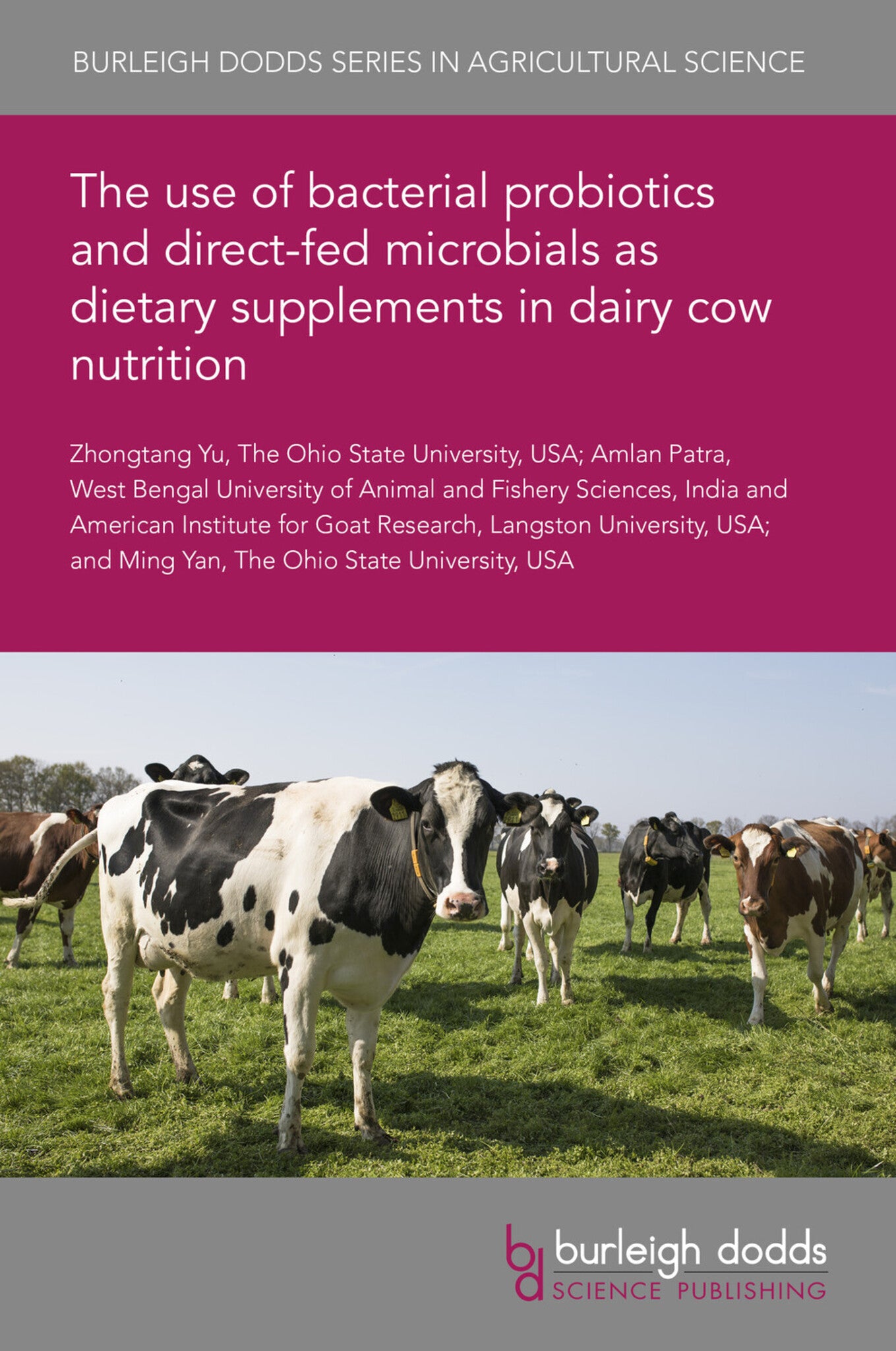We're sorry. An error has occurred
Please cancel or retry.
The use of bacterial probiotics and direct-fed microbials as dietary supplements in dairy cow nutrition

Some error occured while loading the Quick View. Please close the Quick View and try reloading the page.
Couldn't load pickup availability
- Format:
-
13 March 2023

Direct-fed microbials (DFM), or probiotics, overall can improve feed digestion and/or fermentation, reduce the risk of rumen acidosis, increase milk production, enhance immunity and gut health, especially reducing calf diarrhea, and reduce mastitis in dairy cattle. The commonly used DFM include species of lactic acid bacteria (e.g., Lactobacillus spp.), lactate-utilizing bacteria (e.g., Megasphaera spp.), propionate-producing bacteria (e.g., Propionibacterium spp.), Bacillus species, etc. Multispecies DFM can be more effective than single-species DFM. The modes of action differ between DFM intended to function in the rumen and those functioning in the intestines. However, the responses to DFM are inconsistent, owing to variations in bacterial species and strains, dose, diet, and animal factors. Future research is needed to elucidate the mechanism of particular DFM and their interactions with diet and the rumen and/or intestinal microbes, and other animal factors, and to optimize the dose, timing, and duration of DFM supplementation.

TECHNOLOGY & ENGINEERING / Agriculture / Animal Husbandry, Dairy farming, TECHNOLOGY & ENGINEERING / Agriculture / Sustainable Agriculture, Sustainable agriculture, Agricultural science

- 1 Introduction
- 2 Direct-fed microbials commonly used in dairy cattle and their modes of action
- 3 Effects on the rumen and intestinal microbiomes and their functions
- 4 Effects on feed utilization and lactation performance
- 5 Effects on the immune system and health
- 6 Benefit to mitigation of methane emissions
- 7 Conclusion and future trends
- 8 Where to look for further information
- 9 References



